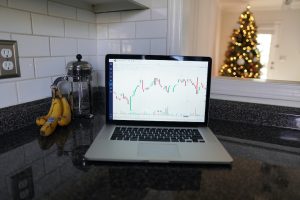The forex market is a highly volatile and unpredictable market, and traders are constantly seeking ways to gain an edge and increase their profits. One of the most popular ways to achieve this is by using forex indicators. Forex indicators are mathematical calculations that are based on the price and/or volume of a currency pair, and they can be used to analyze market trends, identify potential entry and exit points, and predict future price movements.
If you are new to forex trading, using indicators can be a daunting task. However, with a basic understanding of the most commonly used indicators and their functions, you can quickly begin to incorporate them into your trading strategy to maximize your profits.
Here are some key steps to follow when using forex indicators:
Step 1: Choose the right indicator(s)
There are many forex indicators available, each with its own unique function and purpose. Some of the most popular ones include moving averages, MACD, RSI, and Bollinger bands. It’s important to choose the right indicator(s) based on your trading style, risk tolerance, and the currency pair you are trading.
For instance, if you are a short-term trader, you may want to use indicators that are designed to identify short-term price movements, such as the RSI or MACD. On the other hand, if you are a long-term trader, you may want to use indicators that are designed to identify long-term trends, such as moving averages.
Step 2: Set up your charts
Once you have chosen your indicator(s), you need to set up your charts. Most forex trading platforms offer charting tools that allow you to add indicators to your charts. You can also customize the settings of each indicator to suit your trading preferences.
For example, if you are using moving averages, you can adjust the period (the number of time periods included in the calculation) to suit your trading style. The default setting for a 20-day moving average may not work for you, so you can adjust it to a shorter or longer period based on your analysis.
Step 3: Analyze the charts
Once you have set up your charts and added your indicators, it’s time to analyze the charts. You can use the indicators to identify potential entry and exit points, as well as to identify trends and price movements.
For example, if you are using the RSI indicator, you can look for overbought or oversold conditions to identify potential entry points. If the RSI is above 70, it indicates that the currency pair is overbought, and if it’s below 30, it indicates that the currency pair is oversold.
Similarly, if you are using moving averages, you can look for crossovers to identify potential entry and exit points. If the shorter-term moving average crosses above the longer-term moving average, it indicates a buy signal, and if it crosses below, it indicates a sell signal.
Step 4: Use multiple indicators
Using multiple indicators can help you confirm your analysis and increase your chances of success. For example, if you are using the RSI and moving averages, you can look for crossovers that are confirmed by overbought or oversold conditions.
However, it’s important to remember that using too many indicators can lead to analysis paralysis, where you are unable to make a decision due to conflicting signals. It’s best to stick to a few key indicators that work well for you and focus on those.
Step 5: Practice and refine your strategy
Using forex indicators is not a one-size-fits-all strategy, and it takes time and practice to refine your approach. You may need to experiment with different indicators and settings to find what works best for you.
It’s also important to keep a trading journal and track your results. This will allow you to identify what works and what doesn’t, and make adjustments to your strategy accordingly.
In conclusion, using forex indicators can be a powerful tool for traders looking to gain an edge in the forex market. By choosing the right indicators, setting up your charts, analyzing the charts, using multiple indicators, and practicing and refining your strategy, you can increase your chances of success and maximize your profits.





